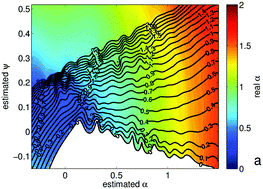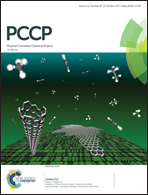An efficient algorithm for extracting the magnitude of the measurement error for fractional dynamics
Abstract
Modern live-imaging fluorescent microscopy techniques following the stochastic motion of labeled tracer particles, i.e. single particle tracking (SPT) experiments, have uncovered significant deviations from the laws of Brownian motion in a variety of biological systems. Accurately characterizing the anomalous diffusion for SPT experiments has become a central issue in biophysics. However, measurement errors raise difficulty in the analysis of single trajectories. In this paper, we introduce a novel surface calibration method based on a fractionally integrated moving average (FIMA) process as an effective tool for extracting both the magnitude of the measurement error and the anomalous exponent for autocorrelated processes of various origins. This method is developed using a toy model – fractional Brownian motion disturbed by independent Gaussian white noise – and is illustrated on both simulated and experimental biological data. We also compare this new method with the mean-squared displacement (MSD) technique, extended to capture the measurement noise in the toy model, which shows inferior results. The introduced procedure is expected to allow for more accurate analysis of fractional anomalous diffusion trajectories with measurement errors across different experimental fields and without the need for any calibration measurements.

- This article is part of the themed collection: 2017 PCCP HOT Articles


 Please wait while we load your content...
Please wait while we load your content...